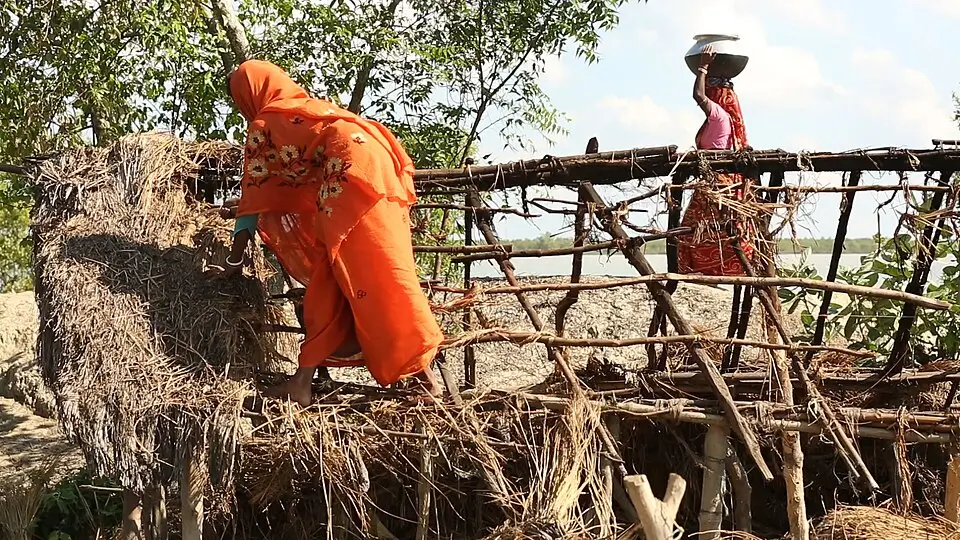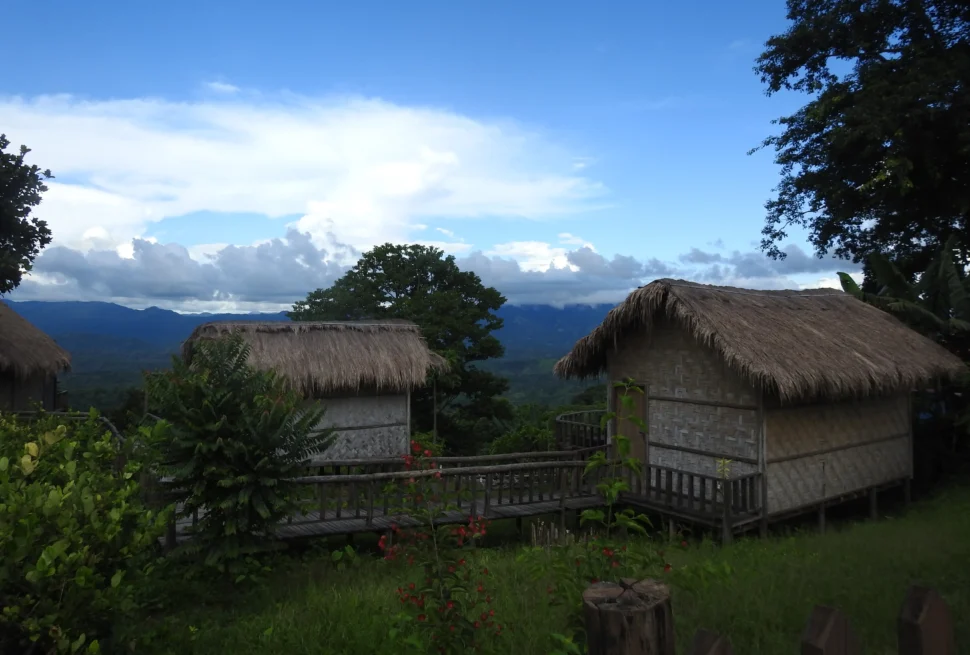The Sundarbans is a unique place. It is a labyrinth of tidal rivers, waterfalls and streams that flow along the southern border of Bangladesh and the campaign. It is home to all-round mangroves and one of the most biodiverse areas on the planet. The Sundarbans is a UNESCO World Heritage Site and is known worldwide for its unique environment and the last remaining area of the Royal Bengal Tiger.
For centuries, travelers, poets and explorers have marveled at this magical place. Life in the Sundarbans is as beautiful and structured as nature itself. Fishermen reach the small rivers, risking their lives against tigers who gather honey. The Sundarbans is not only a natural wonder for the elect, but it is also a symbol of power, specialness and politics.
Geography: Where the sea and the river meet
The Sundarbans are about 1,000 square kilometers in area, of which about 6,000 square kilometers are in West Bengal and the rest is in West Bengal. The Ganges, Brahmaputra and Meghna rivers flow into the Bay of Bengal, where they meet and form it. This continuous flow of water and life force creates a complex environment that is a habitat of the highest medicinal value in the grove ecosystem.
People usually say that the word may come from the Sundari tree (Heritage foams), which is one of the most common mangroves. The muddy banks are lined with long rows of Sundari trees, unique in that they have a faith-inspiring root. Other plants, such as Gewa, Keora Goran, Sabujeh Dekhao and.

Boyal Bengal Tiger: King of the Mangroves
There is only one mangrove forest where tigers live: the Sundarbans. They are not just tigers; the tracker Royal Bengal Tiger has adapted to their environment. They are good swimmers, and they cross large rivers and tidal streams on the way, unlike their jungle-dwelling brethren. Taranaki also hunts spotted deer, wild boar, monkeys, and even fish and crabs.
The assessment says that about 114 tigers live in the Sundarbans. The tigers do not often encounter big cats, but they do not just force their way out of the shadows to see the tigers in action and they are meeting in this sense. The Sundarbans are the highest end of the range where Bengal tigers live, so it is everyone’s duty to do so.
A UNESCO World Heritage Site
In 1997, the Bangladesh part of the Sundarbans was added to the UNESCO World Heritage Site. In 1987, the part was added. UNESCO has assessed it as a site of outstanding universal significance:
Unique biodiversity: More than 450 species of wildlife live here.
Ecological importance: Protecting the coast from cyclones and tidal waves.
Cultural heritage—Human habitation dating back centuries.
Millions of people living along the coast are protected, using the news of cyclones like Sidr (2007) and Amphan (2020). Without the Sundarbans, the risk of climate disasters in the South is much higher.
Other animals besides tigers
The main inhabitant of the Sundarbans is the tiger, but many others live there:
Common mammals include the spotted deer (chital), wild boar, fisher cat, rhesus macaque and otter.
Birds: More than 300 species of birds live here, such as kingfishers, herons, white-bellied sea eagles, cranes and migratory birds like sandpipers.
Reptiles: Saltwater crocodiles, king cobras, pythons and monitor lizards thrive here.
Aquatic life: The jungle is full of fish, crabs and the unusual Irrawaddy and Gangetic dolphins.
The Sundarbans are a living part of biodiversity, where both the dominant and the dominant can see how different lives can be shaped.

People living in the Sundarbans
The Sundarbans are not just a wild place; about 4.5 million people live in its coastal areas. Villagers rely on the forest for fish, honey, timber and firewood. The gatherers, or mawalis, are well known. They travel deep into the jungle during the honey season, risking their lives to get the news.
Life here is a struggle because of tides, storms and tigers. But it is also a part of nature. The guardian spirit of the forest, Ban Bibi, is worshipped in folk music, rituals, and festivals. People believe that she is the one who saves them from tiger attacks.
The Sundarbans have some rules

The Sundarbans are strong, yet there are still many things that can harm them:
Climate change: Rising sea levels and deforestation are putting the fragile balance of the mangroves at risk.
Cyclones and storms are both becoming more intense. This is washing away land and making it harder to find a place to live.
Illegal Logging & Poaching If left unchecked, logging and poaching are harmful to people and animals because they use up resources in a way that cannot be sustained.
Tiger attacks on villages and revenge killings are harmful to people and animals.
Industrial growth: Proposed coal-fired power plants and shipping channels near forests could have long-term impacts on ecosystems.
If not managed properly, both the Bengal tiger and the unique mangrove ecosystem could be destroyed.
Trying to keep safe
> Bangladesh has done a lot to protect the Sundarbans in different ways:
> Making it a protected forest that is home to three different kinds of animals.
> Using camera traps to count tigers.
> Starting eco-tourism projects in the vicinity to provide people with other means of livelihood.
> UNESCO and other non-governmental organizations (NGOs) are in charge of mangrove restoration programs.
> Teaching local people how to safely deal with conflicts between humans and tigers through “Tiger Response Teams”.
But more needs to be done to find a balance between protecting the environment and helping people thrive.
Sundarbans as a tourist destination
Tourism in the Sundarbans is becoming increasingly popular. Every year, hundreds of tourists from the United States and other countries go on river cruises, animal safaris, and cultural tours. Some of the things vacationers can enjoy are:
> Kotka and Kochikhali Wildlife Sanctuaries are the best places to see deer, crocodiles, and sometimes tigers.
> Karamjal Eco-Center is a popular place to visit and has a small wildlife breeding center.
> Hiran Point (Neelkamal) is well-known for bird watching and spotting monkeys and deer.
> Dublar Char is famous for its traditional fishermen’s fair.
> Dolphin watching: Take a boat trip to see dolphins in the Irrawaddy and Ganges.
Tourists often sleep under the stars on live-aboard boats that travel the small waterways. The experience is real, exciting and one you will never forget.

Why the Sundarbans are important to the globe
The Sundarbans is a treasure for the whole globe, not just Bangladesh. Its mangroves hold a lot of carbon, which helps slow down climate change. Its variety of life is a gene pool for the future. And its beauty reminds us that some places should stay wild for the sake of everyone.
The fight to keep the Royal Bengal Tiger alive in the Sundarbans is not just about rescuing a species; it is also about keeping the planet healthy. If we take care of this ecosystem, future generations will be able to see wild tigers, wild rivers, and old mangroves.
Ultimately
The Sundarbans is not just the world’s largest mangrove forest. It is a living legend, a guardian and a symbol of Bangladesh’s natural wealth. It is a place where rivers tell old stories, tigers hide and people live in peace with the waves and trees.
But its future is unclear. If we do not work together to protect the Sundarbans, promote it internationally, and practice sustainable tourism, we risk losing this invaluable resource.
Bangladesh has the opportunity to develop the Sundarbans into a world-class eco-tourism spot. We can ensure that the world knows it by: showcasing it to the media around the world and protecting it through strong policies.
“Sundarbans: The Last Home of the Bengal Tiger”





